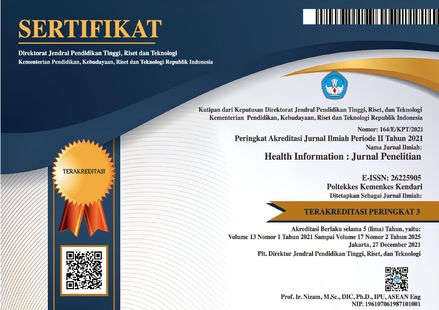Studi Komparasi Prosedur Rinoplasti Dari Aspek Bedah Dan Non-Bedah: Efektivitas Dan Komplikasi
Keywords:
Rhinoplasty, Surgical Rhinoplasty, Non-Surgical RhinoplastyAbstract
Today, the proportion and symmetry of facial features are considered as determinants of the perception of beauty, including the nose. Rhinoplasty is a procedure that aims to reshape the contour of the nose which is done with cosmetic indications or improvement of clinical problems. According to a survey conducted by the International Society of Aesthetic Plastic Surgery (ISAPS), rhinoplasty is one of the top five most popular aesthetic procedures globally. From the patient's perspective, the end result of the procedure is a fundamental issue in rhinoplasty practice, not only to address functional indications but also aesthetic aspects, as well as the overall impact of carrying out this procedure. Aims: The author wishes to compile an integrated literature review regarding definitions, working procedures, advantages and disadvantages including complications of each procedure in order to provide the latest reference regarding comparison of surgical and non-surgical rhinoplasty as a basis for consideration in selecting an action. Methods: A literature search was conducted through databases such as PubMed and Science Direct with the keywords “rhinoplasty”, “surgical rhinoplasty”, and “non-surgical rhinoplasty”. Other studies that did not address the appropriate population and sample were excluded. Results: Surgical rhinoplasty provides permanent results and can be performed in conjunction with other procedures so as to meet efficiency aspects, however, long recovery time, quite complicated risks, and high costs must be considered. Whereas non-surgical rhinoplasty has a short duration of action, faster recovery time, lower costs, but requires more intensive treatment because the results are reversible. Several complications can also accompany this procedure, such as occlusion of blood vessels. Conclusions: Between the two options, it cannot be definitively decided which procedure is superior because both procedures have indications, benefits, and complications that may affect each candidate subjectively. Thus, a comprehensive interview is required regarding the history of the condition, expected results, possible risks and complications, as well as the sociodemographic history and financial status of each candidate before a decision on the selection of the procedure is made.
Downloads
Published
How to Cite
Issue
Section
Citation Check
License
Copyright (c) 2023 Tri Yunita Alicia, Aurora Rahyu Pasya, Gina Lestari, Shania Latiza Muluk, Tiara Leany (Author)

This work is licensed under a Creative Commons Attribution-ShareAlike 4.0 International License.
Authors retain copyright and grant the journal right of first publication with the work simultaneously licensed under a Creative Commons Attribution-ShareAlike 4.0 International License that allows others to share the work with an acknowledgment of the works authorship and initial publication in this journal and able to enter into separate, additional contractual arrangements for the non-exclusive distribution of the journals published version of the work (e.g., post it to an institutional repository or publish it in a book).











